#pulp art 1958
Text

Fantastic Universe Science Fiction Oct 1958
Virgil Finlay
#golden age art#pulp magazine art#pulp art#pulp art 1958#Fantastic Universe Science Fiction#Virgil Finlay art#byronrimbaud
774 notes
·
View notes
Text

PAUL RADER book cover, Three Day Pass-To Kill, 1958
119 notes
·
View notes
Text
‘Classic collection!’




Original artist: Lew Barrows
Original source: ‘Snappy’ comics (1958)
#pin up style#pin up art#comic book art#pin up cartoon#good girl art#pulp art#Snappy#comics#magazines#Penciller#Lew Barrows#1950s#1958#comic strip art
88 notes
·
View notes
Text
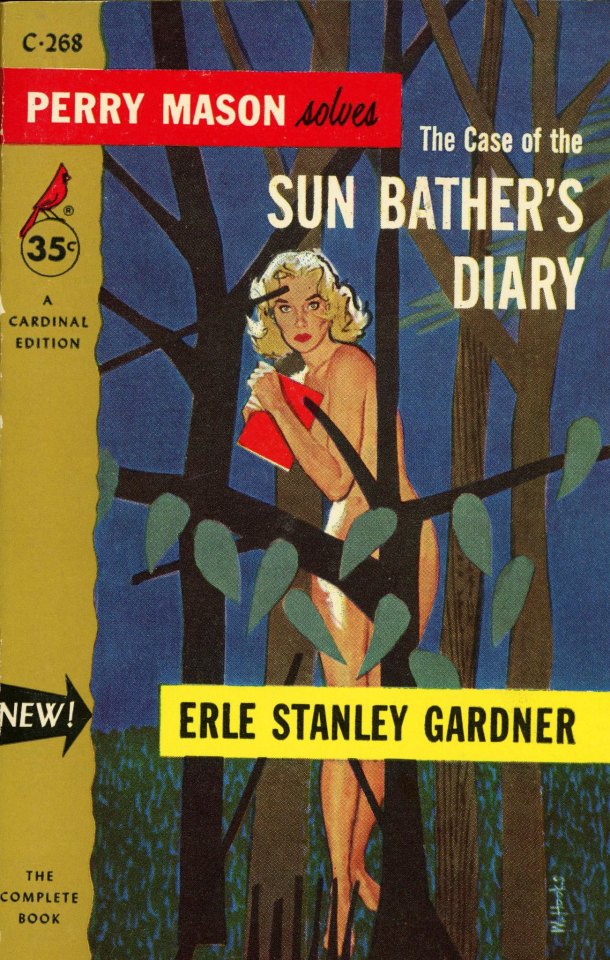
The Case of the Sun Bather's Diary by Erle Stanley Gardner
Cardinal Books C-268, 1958
Cover by Mitchell Hooks
#The Case of the Sun Bather's Diary#mitchell hooks#vintage#pulp#pulp art#painting#art#illustration#paperback cover#1958#1950s
83 notes
·
View notes
Photo

The Cowpoke and his $50,000 Date - art by Wil Hulsey (1958)
#wil hulsey#pulp art#pulp artist#true men stories magazine#old west#cover art#wilbur hulsey#western#the cowpoke and his $50000 date#men's magazines#1950s#1958
149 notes
·
View notes
Photo

The Revenge of Frankenstein (1958)
#The Revenge of Frankenstein (1958)#art#poster#vintage pulp art#Illustration#Frankenstein#frankenstein monster#italian poster#Italian poster art
45 notes
·
View notes
Text

Daily Painting
Virgil Finlay
Cover Art for Fantastic Universe Science Fiction, October 1958
#painting#daily painting#pulp sci-fi#cover art#Virgil Finlay#gorgon#Fantastic Universe Science Fiction#1958
3 notes
·
View notes
Text

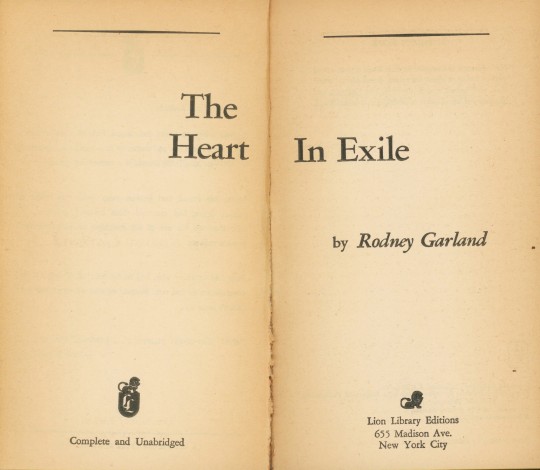

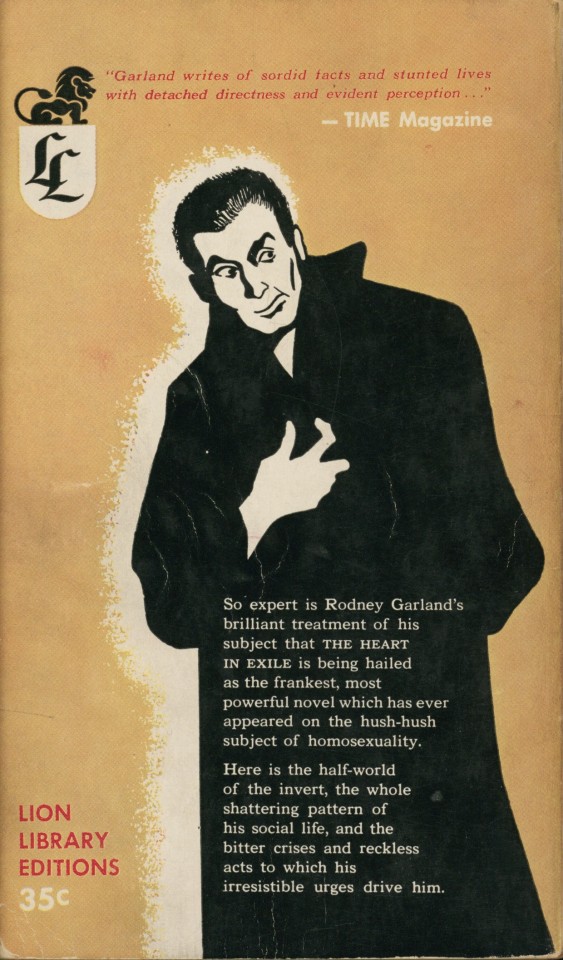
Steamy Saturday
"Creatures of the twilight . . . . driven to prowl their secret, forbidden underground."
"Here is the half-world of the invert . . . the bitter crises and reckless acts to which his irresistible urges drive him."
Julian, his friend, had broken away from this world of searing desire. . . . And then . . . he had committed a monstrous act. Page had to know why. . . . Because he himself, once, had been Julian's lover. . . ."
Oh, the steamy mystery! Dr. Tony Page is a successful psychiatrist, and when his friend Julian Leclerc, a handsome and talented young barrister -- and Tony's former lover -- is found dead, an apparent suicide, something doesn't seem right, and Tony sets out to uncover the truth. His quest takes him from the parties and pubs of the gay underworld of 1950s London to Scotland Yard and the House of Commons as he uses his shrewd and penetrating insight to find who or what was responsible for Julian's death.
Such is the premise of Rodney Garland's The Heart in Exile, a groundbreaking classic of gay fiction and considered the first gay detective story, published in this pulp paperback edition by Lion Library Editions in 1956. The novel, written by Hungarian émigré Adam de Hegedus (1906-1958) using the pen name Rodney Garland, was first published in London by W. H. Allen in 1953. It was a commercial success and was positively reviewed by mainstream publications, and it continues to maintain a significant presence in the queer cultural imagination. The cover art for this first American pulp edition is by noted American artist Arthur Shilstone (1922-2020).
View other gay fiction posts.
View other pulp fiction posts.
#Steamy Saturday#pulp fiction#gay fiction#gay pulp fiction#romance fiction#romance novels#The Heart in Exile#Rodney Garland#Adam de Hegedus#Lion Library Editions#Arthur Shilstone#cover art#gay men#homosexuality#LGBTQ+#UWM LGBT Collectioin
93 notes
·
View notes
Note
Paste Magazine apparently made a list of the 50 Sexiest Songs of All Time, those should get a vote here I think! I just submitted what *I* listen to when I’m in the mood, but we deserve to honor the horny girls of the 50s too!!
I hear you anon, so here's the list:
50. “Too Much Love,” LCD Soundsystem (2006)
49. “Do You Remember The First Time?,” Pulp (1994)
48. “Stir It Up,” Bob Marley (1973)
47. “Your Legs Grow,” Nada Surf (2005)
46. “66,” Afghan Whigs (1998)
45. “Fever,” Peggy Lee (1958)
44. “I Hate The Way You Love,” The Kills (2005)
43. “Leave the Door Open,” Silk Sonic (2021)
42. “Sex With Me,” Rihanna (2016)
41. “Maybe I’m Amazed,” Paul McCartney (1970)
40. “Let’s Spend The Night Together,” The Rolling Stones (1967)
39. “You Really Got Me,” The Kinks (1964)
38. “Crimson and Clover,” Joan Jett and the Blackhearts (1982)
37. “Everybody Here Wants You,” Jeff Buckley (1998)
36. “Electric Feel,” MGMT (2007)
35. “Moments In Love,” The Art of Noise (1983)
34. “Turn Me On,” Norah Jones (2003)
33. “Pony,” Ginuwine (1996)
32. “I Never Loved a Man (The Way I Love You),” Aretha Franklin (1967)
31. “Let’s Stay Together,” Al Green (1972)
30. “Criminal,” Fiona Apple (1997)
29. “Fade Into You,” Mazzy Star (1994)
28. “Bloodbuzz Ohio,” The National (2010)
27. “Crazy Love,” Van Morrison (1970)
26. “Kiss,” Prince (1986)
25. “Bang a Gong (Get It On),” T. Rex (1971)
24. “I Want a Little Sugar in My Bowl,” Nina Simone (1967)
23. “Night Moves,” Bob Seger (1976)
22. “I Just Want to Make Love to You,” Etta James (1961)
21. “Tom Cat,” Muddy Waters (1968)
20. “Adorn,” Miguel (2012)
19. “When a Man Loves a Woman,” Percy Sledge (1966)
18. “Voodoo Chile,” The Jimi Hendrix Experience (1968)
17. “WAP,” Cardi B feat. Megan Thee Stallion (2020)
16. “Untitled (How Does It Feel),” D’Angelo (2000)
15. “That’s Where It’s At,” Sam Cooke (1964)
14. “These Arms of Mine,” Otis Redding (1962)
13. “Whole Lotta Love,” Led Zeppelin (1969)
12. “Feel Like Makin’ Love,” Roberta Flack (1975)
11. “Tonight’s The Night,” Solomon Burke (1965)
10. “Je T’aime…Moi Non Plus,” Serge Gainsbourg and Jane Birkin (1969)
9. “Love Serenade,” Barry White (1975)
8. “Love and Happiness,” Al Green (1972)
7. “Love to Love You Baby,” Donna Summer (1975)
6. “Use Me,” Bill Withers (1972)
5. “Wicked Game,” Chris Isaak (1989)
4. “Tell Me Something Good,” Rufus and Chaka Khan (1974)
3. “Darling Nikki,” Prince (1984)
2. “I’m On Fire,” Bruce Springsteen (1985)
1. “Let’s Get It On,” Marvin Gaye (1973)
9 notes
·
View notes
Note
Pulp heroes are well known for wielding guns, but are there any that have different signature weapons? Are there any weapons you would love to see a pulp hero wield?
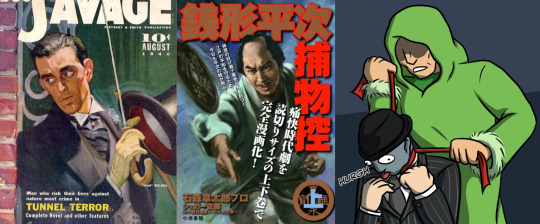
(Green Lama art by edude-makes-comics)
Quite a few, yeah. In general, because there was only so much violence the heroes could get away with, most of the really out-there batshit weapons tended to be the ones created and wielded by the villains, with “guy with a really weird weapon or method of murder that, either presents a mystery too confusing for regular law enforcement to solve, or a threat too dangerous to be allowed to exist” being easily one of the most reocurring kind of monster-of-the-week for most long-running pulp heroes. Guns were popular and ubiquotuous but not the only kind, even the more famous gun-toters like The Shadow or The Spider mixed things on occasion.
Some particular stand-outs among the gun-free pulp heroes, not counting the outright superpowers or non-boolit kinds of guns:
Doc Savage: I mean, kind of, partially included here because he’s a weird example of how gun-toting pulp heroes are so ubiquotous we attribute excessive gun usage even to characters who didn’t actually use them. Doc didn’t particularly have a “signature weapon”, but a lot of modern renditions of Doc Savage based on the James Bama rendition depict him with big bulky guns to the point that Doc’s “signature weapon” nowadays might as well be a Flash Gordon flare gun, but despite the existence of “mercy bullets”, Doc Savage actually hated using guns of any kind as anything other than a last-resort (and even then, that’s what the mercy bullets were for). Doc sometimes invented new forms of weaponry, like miniature grenades, specialized explosives and gas-filled glass balls, to be used on occasion.
Doc is mostly included here because his assistant Ham Brooks actually did have one of the more famous signature weapons of the pulps: a black cane with a concealed sword, coated with a potent anesthetic.
The Green Lama: Who detested guns about as much as Batman. His signature weapon consisted of his long red scarf that he used as a whip and garrote, which makes a pretty funny contrast with the fact that he’s the pacifist American pulp hero, so that means he non-lethally strangles the absolute shit out of criminals instead of shooting them.
Zenigata Heiji: A highly popular detective who appeared in novels, collections and short stories from 1931 to 1958, probably the most direct example of a Japanese Pulp Hero I’ve seen thus far. He’s an Edo-period working class Great Detective who unofficially works for the government in assisting the police without being quite one of them himself. He is most famous for his signature weapons: a jutte he wields, and the heavy coins (called zeni, hence his name) he throws at criminals to catch them.
Zorro: Kinda goes with saying and that goes for all the other Zorro knock-offs / alikes who also largely employed physical bladed weaponry like swords, rapiers, sabers, and etc.
Indiana Jones: Also kinda goes without saying.
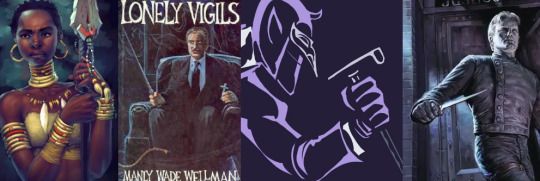
(Dossouye art by Paul Davey)
Sword and Sorcery characters in general: Robert E.Howard’s Conan and Conan-alikes (as well as Solomon Kane, whose signature weapon is a staff), figures that veer into an opposite end like Elric and his Stormbringer, and Charles R Saunders’ Dossouye tends to be depicted often with spears and machetes. You rarely see guns brought into sword-and-sorcery kind of pulp heroes, to not diminish the appeal of cutting down armies while going buck-wild naked with swords intrinsic to the genre.
The Avenger: His signature weapons consist of a gun named “Mike”, and a knife named “Ike”. That’s like, half of what you prompted, but still counts.
Occult Detectives: Several Occult Detective characters who follow closer on the Manly Wade Wellman / Carnacki approach tend to ditch guns in favor of classier or more occult-themed stuff, with both Judge Pursuivant and John Thunstone wielding sword canes, and Luna Bartendale’s divining rod.
Lavender Jack: Who has two signature weapons in the form of his clawed gloves that transmit explosive waves via fingersnap, and the canes that he uses for more direct combat.
Bob Larkin, a Black Mask detective created by Erle Stanley Gardner. The character uses a billliard cue as his main weapon and has 15 years worth of practice as a juggler to make the most use of it.
If we count Scrooge McDuck as a pulp hero, which we have to, we definitely gotta include his cane here as well.
Brutus Lloyd, who was created by The Golden Amazon’s creator John Russell Fearn and appeared in 3 stories for Amazing Stories. He’s a four-foot tall, deep-voiced scientist, criminologist and consulting detective who specializes in solving sci-fi crimes via unorthodox methods, and his main weapon consists of an umbrella tipped with acid he uses to defend himself. He debuted about a year before The Penguin did.
I’m sure there’s gotta be others I’m missing either in pulps or pulp-adjacent material, feel free to point out others in the notes. Now, as to the other part of your question, what kind of weapons I’d like to see pulp heroes wield,

Pretty much anything but pistols. Even other kinds of guns are fine, there’s a trillion wacky kinds of guns out there that can be used to mix things up.
Wrenches, Shovels, Fish wrapped in newspaper, Bottles, Russian Fists for Smashing Baybeez, etc: TF2 as a whole has a painfully massive extensive catalogue of just how many kinds of guns and weapons you can give your characters and it’s a huge source of inspiration for design, that’s where I’d be pulling a lot from. The wrench as a dramatic physical weapon in particular I think works really well for a pulp hero aesthetic.
Chainsaws: I have not been the same since Mandy gave me that sick stupid ass chainsaw duel. Nothing has ever tasted the same. I want more of it.
Gadgets that are completely fucking stupid but still work anyway because this is fiction and if anything this is another reason to do it, taking something that shouldn’t work and make it work.
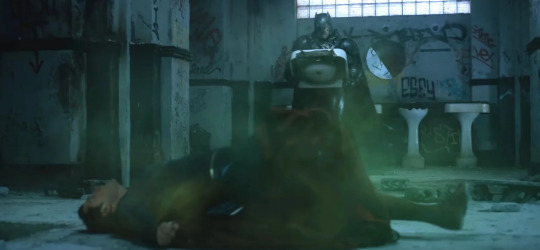
A kitchen sink, because why should Batman get to have all the fun?
And everything in Weird Al’s Hardware Store. For a start. Make it work.
#replies tag#pulp heroes#pulp magazines#pulp fiction#green lama#heiji zenigata#doc savage#dossouye#lavender jack#the avenger#tf2
31 notes
·
View notes
Text

Super-Science Fiction Jun 1958
Frank Kelly Freas
#golden age art#pulp magazine art#pulp art#pulp art 1958#Super-Science Fiction#Kelly Freas art#byronrimbaud
580 notes
·
View notes
Text
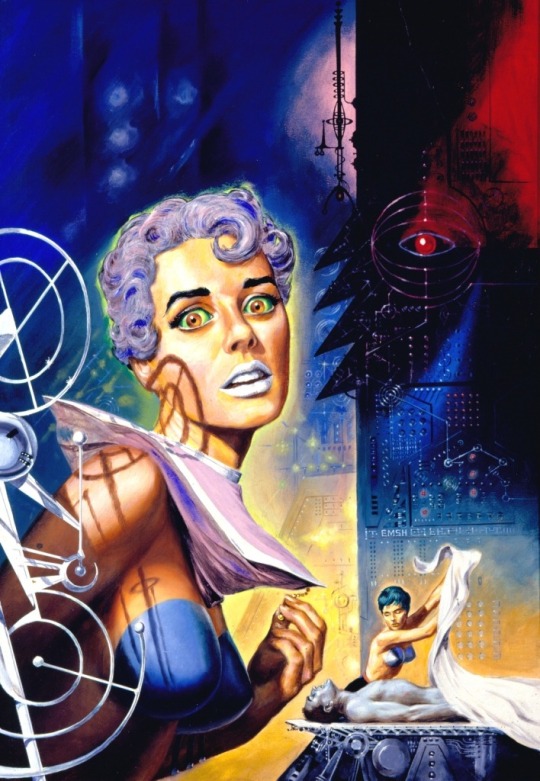
EDMUND EMSHWILLER, book cover, World Without Men, 1958
18 notes
·
View notes
Text
‘Easy does it!’

Original artist: Bill Wenzel (1958)
#pin up style#pin up art#comic book art#pin up cartoon#good girl art#pulp art#comic strip art#Bill Wenzel#1950s#1958
45 notes
·
View notes
Text

Built for Trouble by Al Fray
Dell Books A167, 1958
Cover by Robert McGinnis
#built for trouble#robert mcginnis#1958#1950s#vintage#pulp#pulp art#painting#art#illustration#paperback cover
208 notes
·
View notes
Text
Born Sidonie-Gabrielle Colette in 1873 in a Burgundian village 115 miles south of Paris, Colette went on to become a legend of French letters and a celebrated author. She wrote more than 30 books and was made a member of the Belgian Royal Academy, the prestigious French Academie Goncourt and a grand officer of the French Legion of Honor, before becoming the first Frenchwoman ever accorded a state funeral in 1954.
Throughout her life, Colette's allegiances would remain unabashedly provincial. "I belong to a place I left behind," she wrote of Saint-Sauveur-en-Puisaye (she lived most of her life in Paris). She also made no bones about her voracious love of food.
Colette's mother, Sido, was the daughter of a mulatto merchant from Martinique and a French woman from Versailles, and had grown up in a bourgeois but politically liberal milieu in Brussels. Even as a girl, Colette could see that her mother felt a deep nostalgia for the refined life she had left behind. Unlike her mother though, Colette didn't see the villagers as "other," because she was one of them and always would be.
One of her most famous books, Cheri, was of a portrayal of a middle-aged woman who seduces her stepson and instructs him in the art of love. Franco-American actress Leslie Caron famously played the role of Gigi in the 1958 film of the same name.
One review writes of the book:
Cheri is the sort of book which endears itself to the reader partly because of its subject, but more because of the manner of its telling. Its delicacy of sentiment, its tenderness of mood when concerned with matter not usually delicate or tender, makes the reader forget that Mme. Colette is writing of a gigolo and a courtesan and accept her characters as creations worthy of more intimate sympathies. When we first see Fred Peloux, more intimately known as Cheri, he is a petulant boy of 19 with a feminine taste for jewels and the disposition of a very spoiled child. He is living with Lea, a friend of his mother's, who is half mistress, half nurse to the boy. In fact, his pet name for her is Nounoune, reminiscent of childhood relationships. She has made him over, by feeding him and making him exercise, transforming him from a neurotic, barely nourished child into a handsome young man who depends on her body for his pleasure and her management for his ease of living. Until Cheri marries a young convent educated girl, Lea didn't realize that he was to be her one true love. Cheri, after the experience of an older mistress, finds little satisfaction in his young bride, and his return to Lea in the climax of the book is dramatic and moving, the more so because it is followed by the stoical acceptance, on the part of Lea, of the recognition of her age.
"There's a blunt positivity in Burgundians and definitely in Colette's writing," said Caron. "The countryside of Burgundy is peppered with stocky, solid farms that each had round towers - to raise pigeons I think. Never refined or coy, the architecture of those rich farms didn't go for ornaments of style and neither does Colette's writing."
Colette's village life had ended when at the age of 20 she met Henri Gauthier-Villars, 14 years her senior, who took her to Paris as his wife. One day, interested in her stories of school life, he encouraged her to write them down. He then sent them off to an editor - under his own name - and so were born the Claudine novels, which made him famous. By the last volume, entitled Claudine Married, Colette was reporting on a menage a trois almost in real time, with the protagonists so lightly disguised that the other woman, the American wife of a wealthy French mining engineer, had the novel pulped. But Colette's husband, wily as ever, had retained copyright, and it was rushed out regardless. Her husband was also unfaithful to her and, Colette biographer Judith Thurman suspects, gave her gonorrhea. After thirteen years, Colette became disillusioned and divorced him. She later married Henri de Jouvenel, a news editor, who she would have a daughter with. Year after year she turned out novels, many of them thinly disguised autobiographies. By 1927, eminent writer Paul Claudel was calling her "the greatest living writer in France."
Colette's marriage to Jouvenel ended in divorce though, in 1924, due partly to his infidelities and partly to her affair with her 16-year-old stepson, Bertrand de Jouvenel. She had been waiting a regular column in Le Matin, where Jouvenal had been her editor. Their separation forced her to sever ties with Le Matin.
With Cheri in 1920 being her most famous book, she also wrote the 1944 novella called Gigi, which was dramatized for Broadway by Anita Loos, and made Audrey Hepburn, who was selected personally by Colette for the movie part, a famous actress. The plot focuses on a young Parisian girl born into a family of demimondes, who is being groomed for a career as a courtesan to captivate a wealthy lover, but ends up defying tradition by marrying him instead.
In 1935, Colette married her third husband, Maurice Goudeket, a Jewish man 16 years her junior. In these later years he cared for her as she became crippled with arthritis, although she continued to write during those years and published L'Etoile Vesper and Le Fanal Bleu, in which she reflected on the problems of a writer whose inspiration is mainly autobiographical.
While Colette married three times, she always also knew that the shock of marriage contained something greater than her own experience of any specific man: it ended any sense of independent sovereignty. And that existential shock reverberates through her fiction - from the offhand but sincere worry the courtesan Lea displays for the her self-absorbed teenage lover Cherie when he is about to marry, to the masterful, quiet short novel The Cat, in which a boy marries "an amorous and untamed young woman." Marriage, even to someone who is kind and true is, as she puts it in The Vagabond, a "long-drawn out voluptuousness, suspended, fanned, renewed, the winged fall, the swooning in which one's strength is renewed by its own death."
Colette was a woman who wrote novels, short stories, essays, memoirs and as a journalist reported on everything from domestic violence to the front lines of the first world war, from anorexia to literature, from fashion and cooking to fake orgasms. She wrote a libretto for a Ravel opera and scripted pantomimes - in which she acted. She was a successful mime and dancer, opened a chain of beauty salons (demonstrating makeovers on her daughter) and was an enthusiastic early adopter of everything from sushi to weightlifting, perms to acupuncture and facelifts. She was for awhile the literary editor of Le Matin, had three marriages, with men and women (she had a relationship for six years with a cross-dressing noblewoman), and with her second husband's 16-year-old son. And even when she conceived her daughter, Colette de Jouvenel - also called Bel-Gazou - she didn't let that get in the way of living her life. She was also a huge cat lover with one of her books focusing on a love triangle between a man, a woman and a cat:
The Cat [La Chat] tells of a love triangle involving Camille, her husband Alain and his Chartreaux cat Saha. Camille loves Alain, but Alain loves his cat.
Camille becomes so annoyed with his obsession for the dainty little Chartreuse cat with her lady-like ruff and her golden eyes, that she pushes the cat off a balcony to what she hopes is her imminent death. But little does Camille know, Saha isn't on her 9th life yet. Alain finds out and divorces Camille, moving back into his mother's basement with his cat.
The attention of any bibliophile cat owner is bound to be grabbed by The Cat. Readers will find Alain flung on the cool expanse of sheets with his cat Saha purring full throatedly while her owner sighs, and his woman leaves.
0 notes
Text

Roger Vaneyre [alias Roger Faller, vrai nom Roger Menanteau]
"Cinq ans de prison" (Mon Roman Policier #540, Éditions Ferenczi, 1958, 32pages)
Chaque année, le commissaire Borel a l'habitude de passer ses vacances à Corancez, un petit patelin dans la Beauce. Et chaque année, le journaliste local lui consacre un petit article dans une feuille qui tire à 500 exemplaires. Un nommé Gardel vient le trouver, persuadé d'avoir à faire à une sorte de Maigret ("Un détail qui a son importance"), et lui montre une lettre écrite par son beau-père, Felix Dirand, une véritable confession d'une vie tourmentée de souffrance silencieuse dans laquelle celui-ci affirme qu'on l'assassinera.
Félix, mutilé de guerre, épousa Antoinette, eut un fils et une fille d'elle, avant de se voir refuser le lit conjugal et imposer la présence à demeure de Charbin, l'amant d'Antoinette. Et à la vue et au su de tout le monde.
Félix est mort, officiellement par abus involontaire de somniferes.
Gardel invite le commissaire à l'apéritif dans la demeure familiale et, en présence de tous les acteurs du drame, la lumière se fera sur le décès de Félix Dirand, point d'orgue d'une existence pitoyable.
C'est Borel, au cours d'un dîner après la fermeture, qui raconte cette histoire à son ami journaliste et au couple d'aubergistes suspendus à ses lèvres. Il y a donc des pauses dans le récit de Borel, des pauses de gourmet, qui permettraient de prendre du recul mais qui ne font que redoubler le suspens du récit [du grand art, côté jubilatoire/jouissif, à mon avis, soit dit en passant]
L'auteur nous envoie ici en pleine figure un thème qui sera présent en filigrane dans presque toute son oeuvre future.
***
Cover art: Geo Sogny
#Roger Faller #Roger Vaneyre #Roger Menanteau #pulps #french pulps #crime #roman policier #Geo Sogny
1 note
·
View note